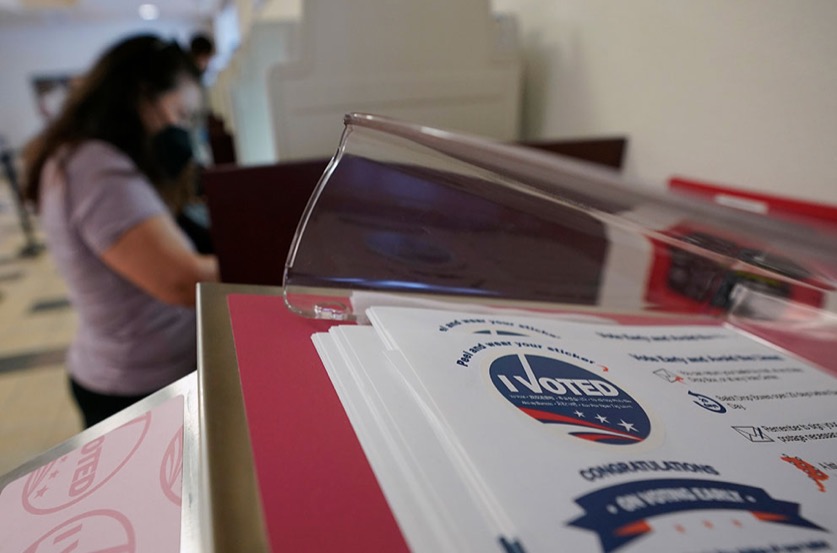CommentsREFORMING DEMOCRACY - California lawmakers and civic leaders are debating changes to our state’s direct democracy.
But not one of the proposed changes is bold enough to reach the heart of what’s wrong with our system of initiatives, referenda, and recalls.
When Californians use their direct democracy to qualify proposals for the ballot, and vote to turn those proposals into laws or constitutional amendments, the actions they take don’t have to fit within existing institutions, agencies, laws, regulations, or practices. Our direct democracy exists in its own weird world apart from the rest of California government.
As a result, initiatives become bullets shot into the system, opening up holes that can’t be easily repaired. Ballot initiatives can spend money or change taxes in ways that violate existing budgets. Ballot initiatives can establish new restrictions on democratic rule—like establishing supermajorities—and impose complex or erroneous formulas on government programs. And once ballot initiatives are approved by voters, they can’t be amended or corrected by lawmakers—unless the initiative’s original text permits it.
Here’s the nice way to describe this fundamental problem: our direct democracy is not integrated with the rest of the governing system. The less nice way is: our direct democracy is designed to screw everything up.
That screwing-up, in turn, breeds frustration with government—which, in the most bitter of ironies, makes Californians want to file more initiatives, which screws up government more.
Our direct democracy thus feeds on the very frustrations it helps fuel.
Now California has entered one of those rare moments when it is examining ideas for reforming direct democracy. The failed attempt to recall Gov. Gavin Newsom has spawned all kinds of intriguing proposals, some of them worthy. But none of them will end the cycle of frustration. Because none of them will integrate direct democracy with the rest of the government.
Many of the most creative proposals are unfortunately focused on small pieces of just one piece of the direct democracy system—the recall, which hasn’t had the same impact on governance as the ballot initiative.
A constitutional amendment by State Sen. Josh Newman, a Southern California Democrat, would eliminate California’s practice of holding a replacement election at the same time as a recall. (Instead, a recalled official would be replaced by appointment, a special election, or, in the case of a governor, the promotion of a lieutenant governor.) The state’s Little Hoover Commission, an independent oversight agency, has recommended making it harder to qualify recalls of statewide elected officials, and replacing our two-piece recall elections with a snap election, in which the targeted official and would-be replacements would appear on the ballot.
However worthy the goal of making recalls harder, this narrow approach has a crucial defect: it limits the power of the people to use the people’s process. Too many reform proposals to do the same. The legislature has repeatedly pursued restrictions on petition circulators and signature gatherers that would make qualifying ballot measures even more expensive. (Fortunately, the past three governors have vetoed such attempts.) And in recent years, lawmakers increased the fee to file your ballot initiative idea with the state from $200 to $2,000.
The problem with such changes isn’t just that they restrict access to direct democracy. It’s that they don’t do anything to fix the process. Actual fixes require the hard, historic work of redesign aimed at integration between direct democracy and the rest of the government.
No proposal that attempts this is yet on the table. But the good news is that there are now many conversations among California movers-and-shakers, some of whom were involved in a 2014 reform that created a little more flexibility in the ballot initiative process, about how to instill more public deliberation and reflection into our direct democracy.
Some of the most interesting ideas involve incorporating citizens assemblies—randomized, representative groups of regular citizens—into the process. Such bodies might serve as neutral parties helping making our ballot initiatives easier for the average voter to digest. They could review measures to give them titles and official summaries (currently under the purview of the state attorney general), or even decide which initiatives to put on the ballot.
Such reforms would be novel, and might create space for more changes, but they are still too small—because they focus just on changing direct democracy. True integration would mean changing the rest of California’s dysfunctional and complicated government as well.
The most straightforward way to make it happen would be creating a convention to draft the first new state constitution since 1879. Such a convention is a political longshot. But there are intermediary improvements we could make now.
The easiest would be a rethinking of our election calendar. Let’s remove initiatives and referenda from the too-long November ballots, full of candidate races. We then could give direct democracy a new calendar that fits the work schedule of state government.
There should be at least three days each year dedicated to votes on state ballot measures. One should come during the spring budget season, so the people’s decisions on spending and taxation could be integrated into the state budget. There should be a second vote on ballot measures to enact new laws in September, when the legislative session closes and the governor decides whether to sign new laws. A third vote might take place in December, when lawmakers draft and propose new laws for the following year.
Such a calendar should be reinforced with new rules that require ballot initiatives to live within existing budgets (if they add more spending or reduce taxation, measures must find other revenue sources to balance things out) and to be subject to amendment and correction by legislators, like other statutes. At the same time, we should make it easier for regular Californians to correct the mistakes of legislators—perhaps with a citizens’ assembly that can change legislation before it goes into effect.
And Californians, when voting on measures, need to think of themselves more like legislators. One of the many rich people and foundations now self-righteously claiming to be “saving democracy” should offer free training to all of us on how to understand a budget and proposed legislation, including ballot initiatives.
Since Californians insist on the power to act as lawmakers, we need to know how laws work.
(Joe Mathews writes the Connecting California column for Zócalo Public Square where this article was first published.)















